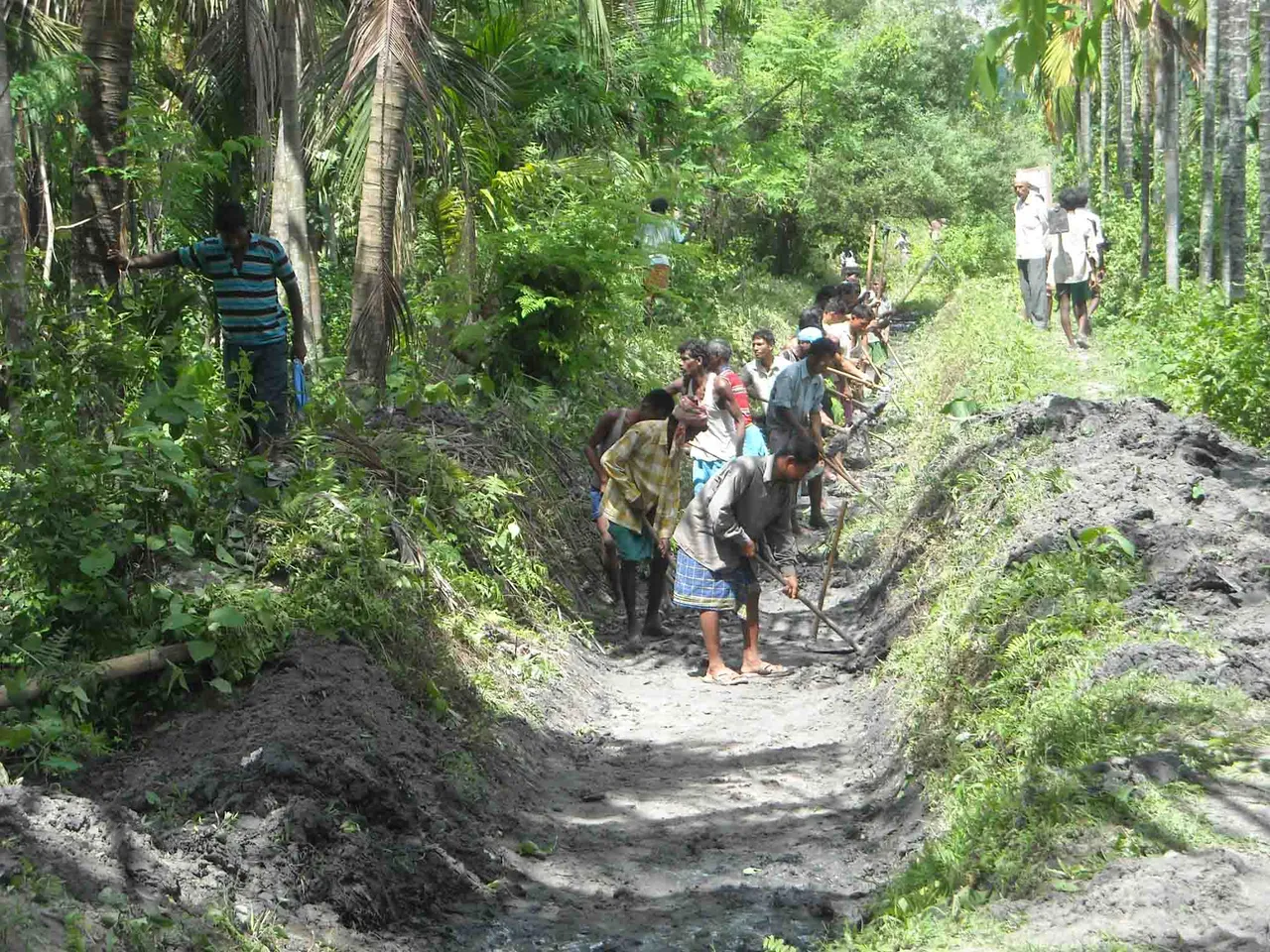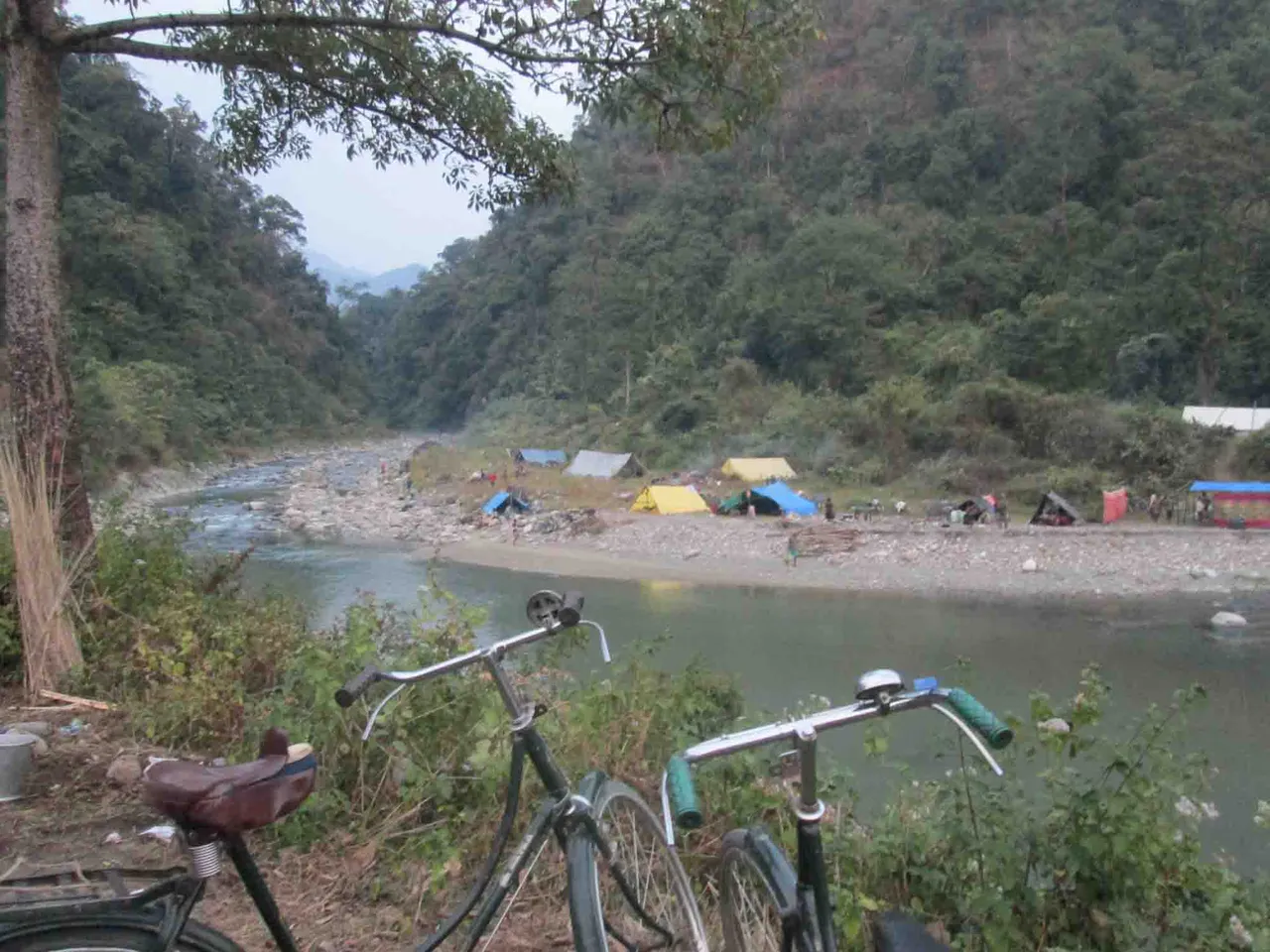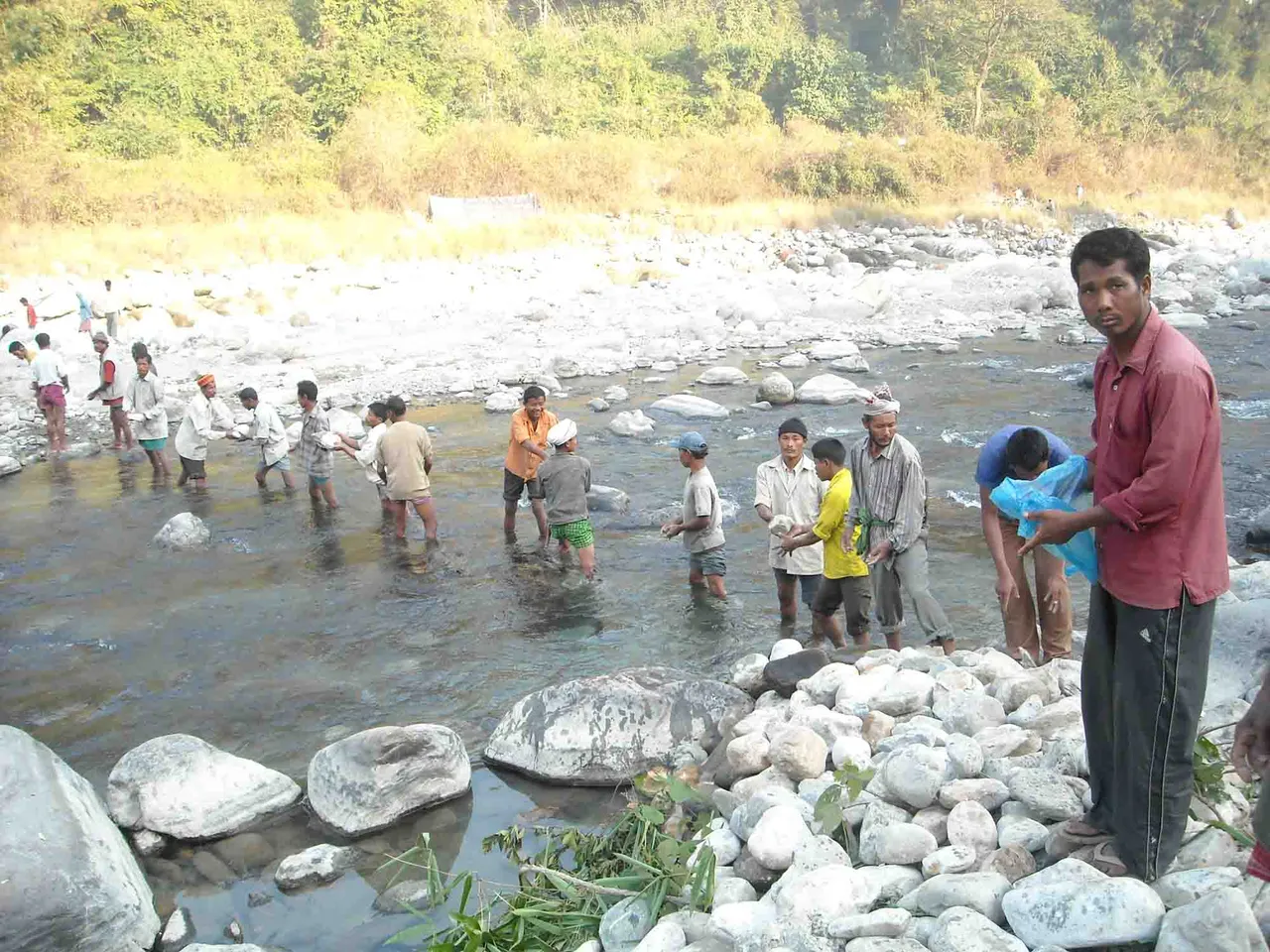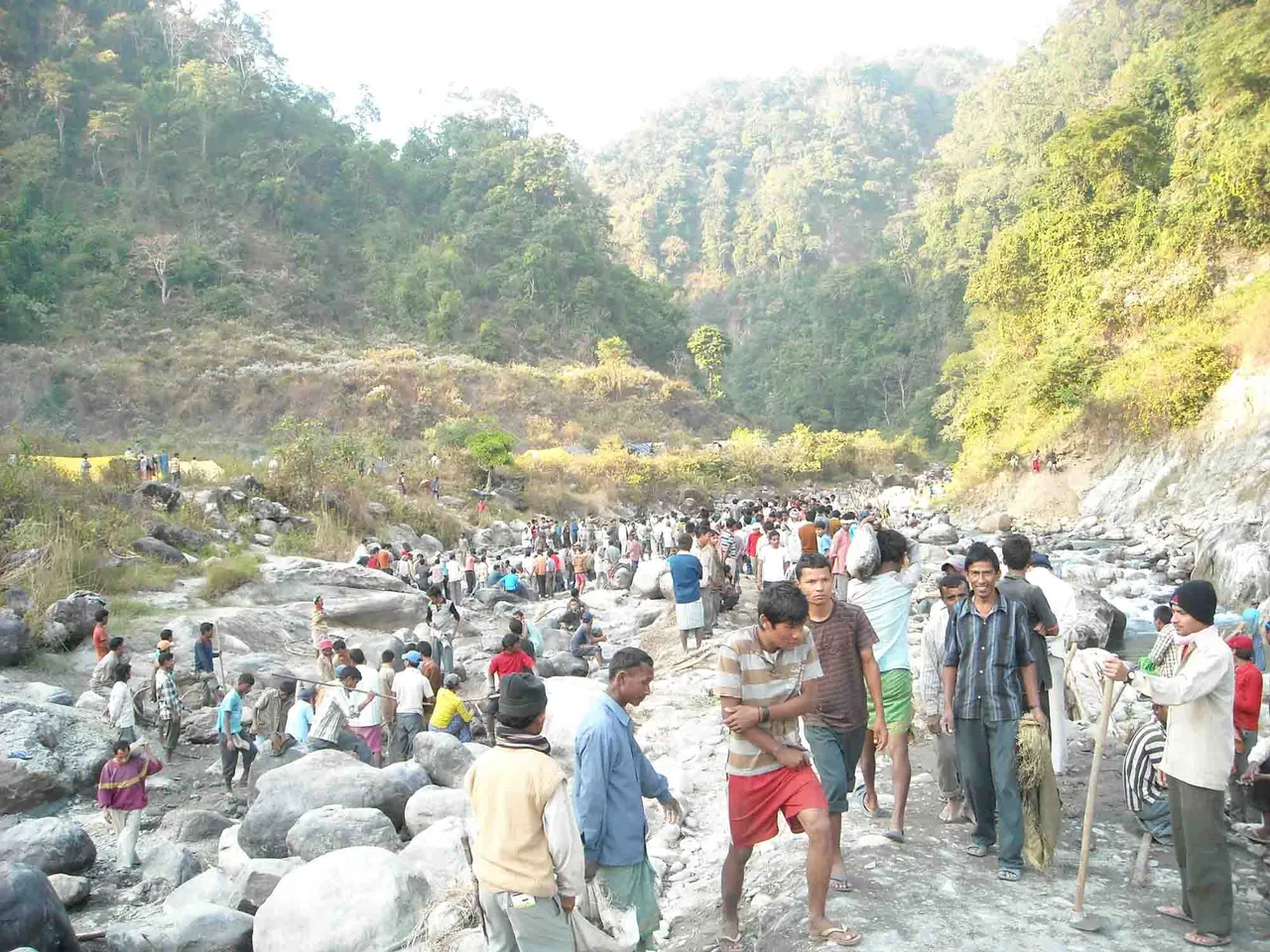
Rivers have played an important role in shaping human civilization since time immemorial. Most of the human civilizations have developed on the banks of rivers and shores of seas. In India most of the rivers are revered as female deities like the Ganges, Yamuna, Saraswati while river like Brahmaputra is worshipped as a male deity.
The Greek as well as other Western civilizations also had the tradition of associating water bodies with deities. The saga of human weal and woe has inseparably mingled with rivers where a turbulent river has been transformed to a benevolent entity of nature.
A saga of human-river relation was scripted in the northern belt of Assam along Indo-Bhutan border in presently Baksa district (formerly Kamrup and Nalbari) in Assam around the year 1935 when the concept of manually constructed bunds (embankments ) and canal (locally called dong) network (dong system)over Pagladiya (a confluence of Pagla and Diya ) river took birth in the fertile minds of some farmers of a tribal community called Modahi in association with Bodos, Gorkhas, Assamese, Rabha , Sarania and Adivasis. Geographically, the area lies between Latitude 26®-40’-00”N to 26®-50’-00”N and Longitudes 91®-20’-30”E to 91®-30®-00”E.
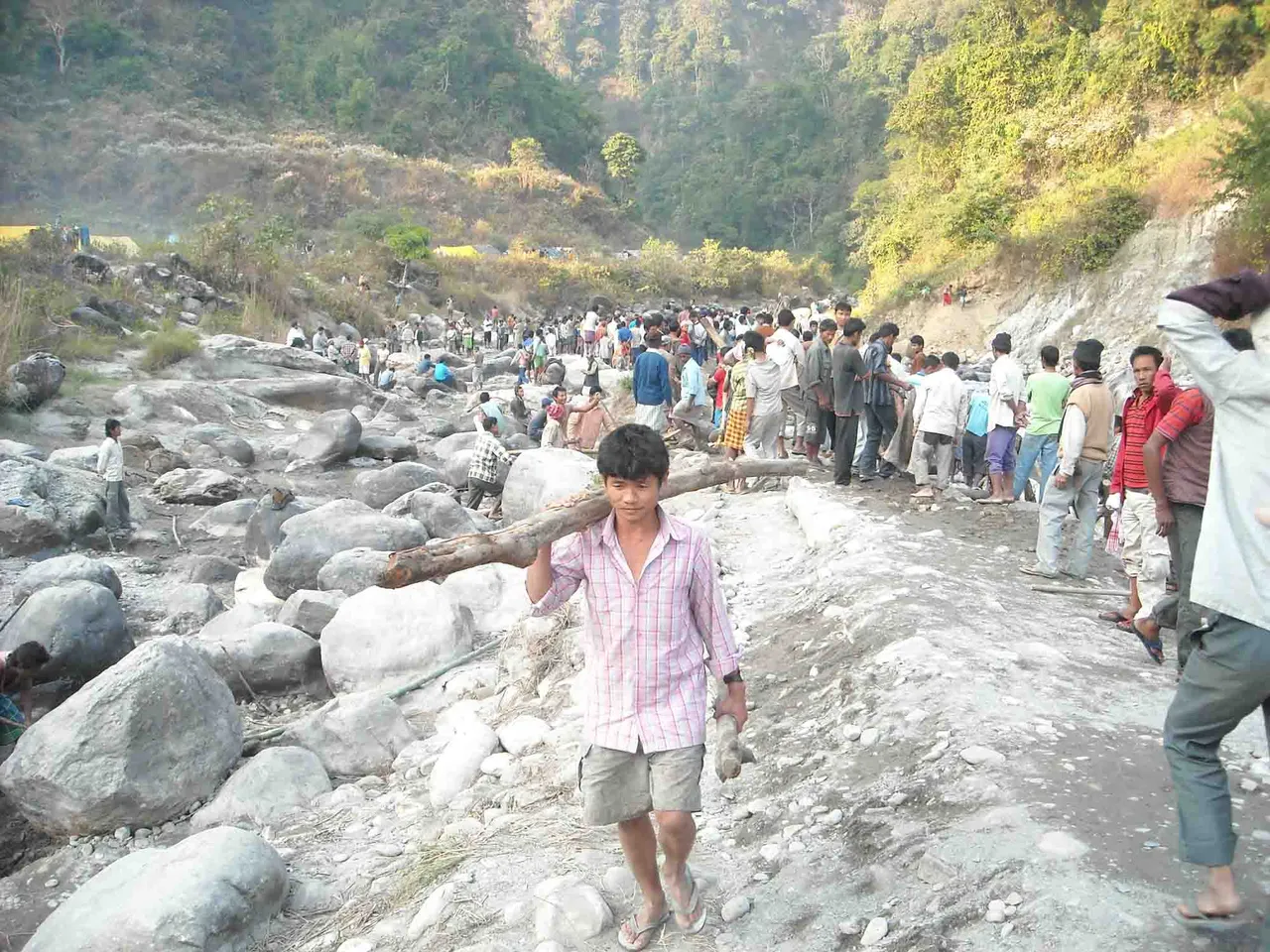
The pioneers of the traditional manual irrigation system were Bhanduram Modahi, Dhaneswar Modahi, Raja, Payaram Modahi etc. of Chaulkara village. Far away from the mainland these farmers could hardly dream of a drinking water supply or irrigation scheme sanctioned by the govt. As drinking water was scarce and the poor villagers could not afford to dig ring-wells in this rocky and sandy loamy upland region they volunteered to dig out canals from the Pagladiya river initially for drinking and later for irrigation.This venture got the shape of an organisation in a public meeting held at Nikashi Public Hall in 1954 under the chairmanship of Sivanidhi Bhattarai when Uttar Anchalik General Pagaldiya Dong Bund Committee was formed. Bishnu Basumatary (village headman) and Baneswar Brahma (Habildar) were selected president and secretary of the first committee. Now it is an umbrella organisation of 14 numbers of Group Dong Bund Committees. Constitution of the parent body was adopted in 1965.
The 14 Group committees under Uttar Anchalik General Pagaldiya Dong Bund Committee are No 1 Group Diring Bund Committee with 27 villages, No 1 Group Chaulkara Chouki Pagaldiya Dong Bund Committee with 28 villages, No 2 Group Jopa Pagaldiya Dong Bund Committee with 26 villages, No 3 Group Uttarkuchi Subankhata Dong Bund Committee with 17 villages, No 4 Group Dakshinkuchi Dong Bund Committee with 9 villages, No 5 Group Moithabari Dong Bund Committee with11 villages, No 6 Group Jharbasti Dong Bund Committee with 2 villages, No7 Group Lebra Santipur Dong Bund Committee with 1 village, No 8 Group Sonajuli Dong Bund Committee with 2 villages, No 9 Group Madhupur Mainaguri Dong Bund Committee with 12 villages, No 10 Group Uttarkuchi Jalabasti Dong Bund Committee with 2 villages, No 11 Group Kaldiya Dong Bund Committee with 1 village , No 12 Group Madhupur Majsupa Dong Bund Committee with 1 village and No 13 Bhutankhuti Simlabasti Dong Bund Committee with 3 villages.
The cultivators of 129 villages under Uttar Anchalik General Pagladiya Dong Bund Committee are dependent on the Pagladiya River for cultivation of both summer and winter crops as well as for filling their ponds. As the name suggests Pagladiya (meaning a mad river) is unpredictably treacherous .Pagladiya is the body of two rivers Pagla and Diya merged into one .The river body which generally remains shallow round the year, takes no time to swell and wash away the embankments manually constructed by the cultivators to raise water to the canals linked to their fields. The canal beds near the water source are filled with silts. It is the time the service of the rural-folk is called for reconstruction or repairing of the embankments and clearing the silt from the canals. Uttar Anchalik General Pagaldiya Dong Bund Committee summons one member from each household for shramdan (voluntary service) through the respective group, branch and village committees. The days of shramdan may vary from 3 to 7 days depending upon the repairing or reconstruction to be done “Shramdan” with boulders, stones, trees, creepers and soil etc.
The community irrigation system encompasses 1, 94,352 bighas (a local unit of land measurement) of land covering about 5897 households. Each Dong Bund Committee has three years term. Fine is levied on the farmers who don’t attend voluntary services during the repairing of canals and embankments. The fine is fixed according to the area of cultivable land as well as numbers of bullock pairs or tractor used for cultivation. There is an all accepted routine for sharing of river water through mutual understanding .During shramdan farmer’s camp on river beds.The riverbed throbs with the clamour of farmers as they pile up boulders or logs of timber on the embankment or split rocks for diverting the water. At night the landscape wears a mystic look as the camps of respective groups are illuminated by petromax lights.Youths sing, play flutes and gossip sitting over gigantic rocks while elders take rest or play cards in the camps .Food is prepared in respective camps.People also gather at the river bank for performing Pagla Puja , a ritual of worshipping the river as male deity before the commencement of the cultivation season.
The community irrigation and embankment system at Pagladiya is more than a community regulated water sharing system for cultivation.The farmers of diverse religion ,language and ethnicity work together for a common goal and it galvanizes the social bond. This makes the system a unique and harmonious community structure.
